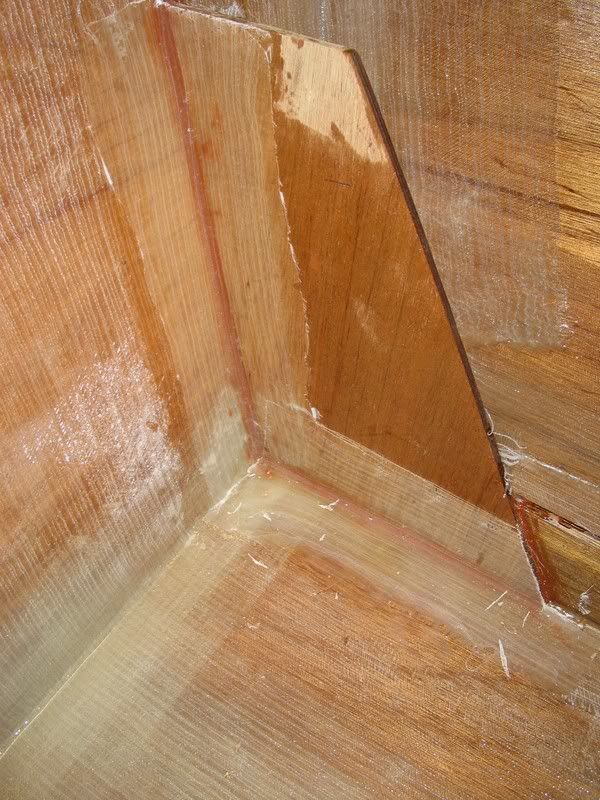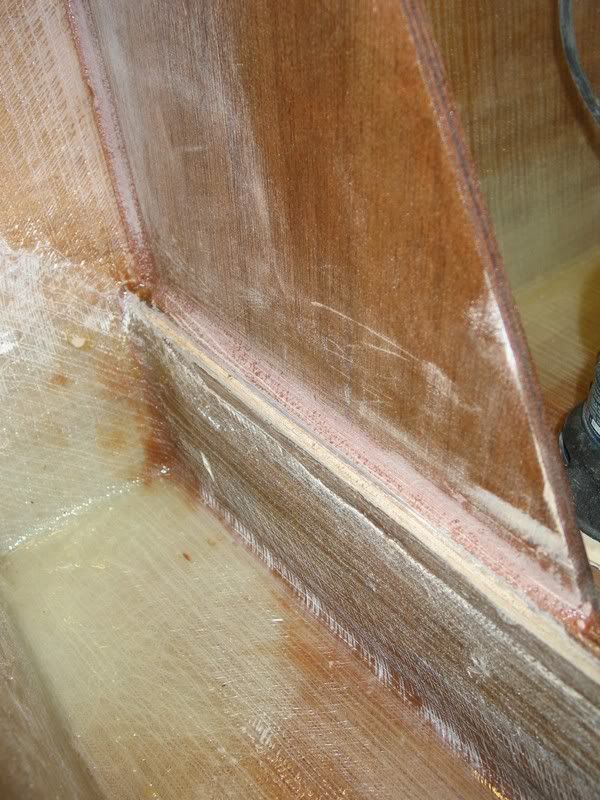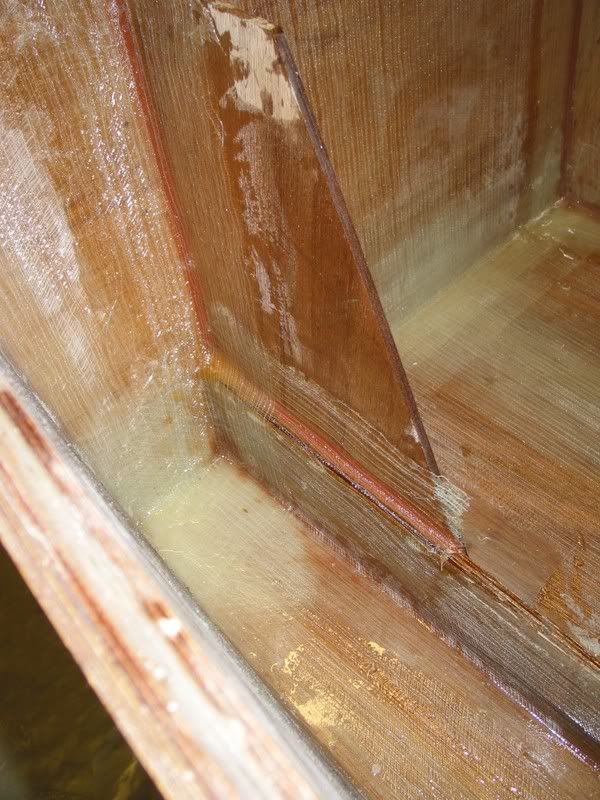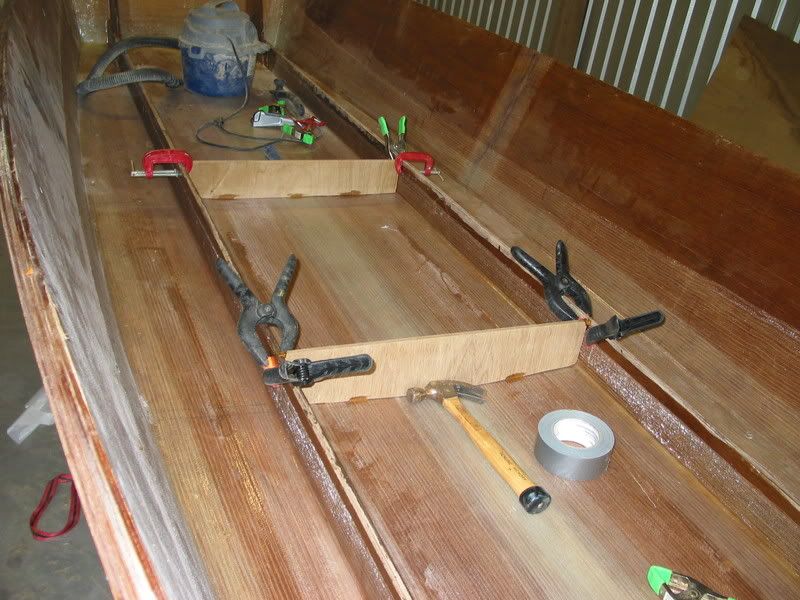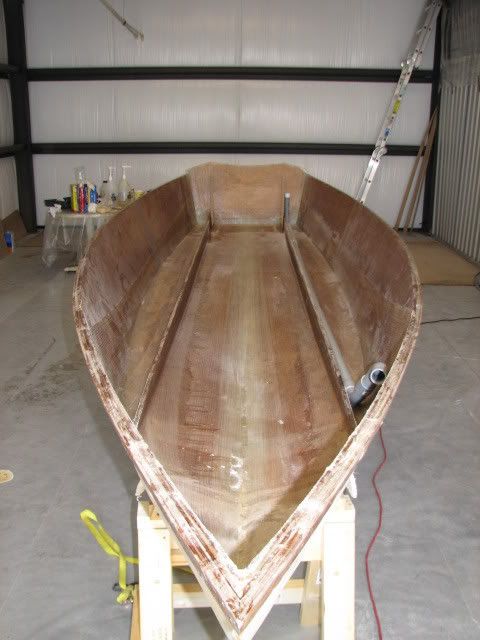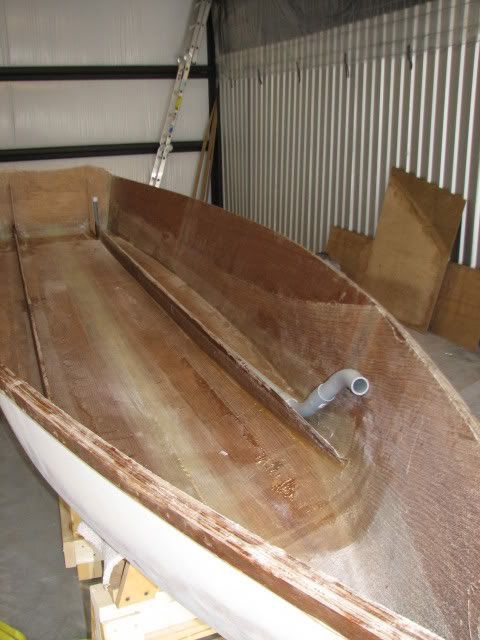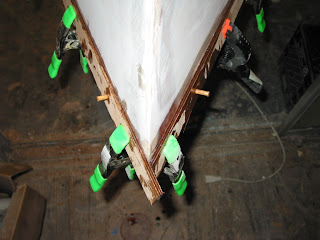I've reached the stage in the build where every step requires a great deal of forethought. For the most part, I'm no longer following the plans and am customizing the layout based on my own personal preference. This presents the opportunity for colossal screw-ups heretofore never encountered! So I'm just trying to take things slowly and methodically, but without letting the whole "paralysis through analysis" thing grind the build to a halt. I've already glassed in the undersole midframes, so the next step is to figure out what I'm going to do with the walkaround gunwale supports/rodholders. After a lot of cardboard templating, this is where I'm currently at.


Since the rodholders are integral to the framework of the boat, their location fore and aft can't be changed. This sucks, as where they have to be is not exactly ideal for holding ... uh ... rods. To actually have the rods supported correctly, the tips have to penetrate the bulkhead at the front or back of the cockpit. As shown in the pics, I'll probably go with the rear bulkhead, Flip Pallot style. The idea behind this is that it provides easiest access to the person on the casting deck. If the caster is throwing a 7 weight for reds and a pack of rampaging jacks rolls through, the 10 weight should be within easy reach. In theory. The pics show an 8' spinning rod, 9' 12 weight, and 7' light spinner in the holders. Looks like for maximum fly rod rockage, all the tubes will have to extend almost to the transom. I might also have to raise the lower rod slot to make it useful for anything but something like a gaff. I'm close to what I want though. The finished product will be a sandwich of 2 pieces of 1/4" ply and a piece of 1x mahogany, which should give me a frame about 1 1/4" thick. I shudder at the idea of a $500 fly rod bouncing around on the single piece of 3/8" shown in the plans. For weight reasons, Divinycell would have been a preferable core to the mahogany, but that stuff is outrageously expensive when compared to the low, low price of free I'm getting the mahogany for. Bungees will secure the rods in the holders while running.
OK, so I'm just going to come right out and say that from here on out, a lot of the customizing you see me do you'll already find on Bayport Bob's boat. Part of that is because I feel like we've had a similar vision for our boats from the beginning. Part of it is that some of his design solutions are more workable than the ones I've come up with, the most notable being gas storage. Also, his FS18 appears to be totally badass, so there's that.
The Cap'n has a new perch. He doesn't have anything to add to the rodholder discussion except that he is watching you and is terribly displeased.

Woot.

